Backcountry skiing is a diverse beast. It’s every bit as dangerous as it is exhilarating. Flying off of side hits and nailing Misty flips, Underflips, Rodeo flips, and whatever other flip that people can think of. It leaves you with a satisfying rush of energy.
But hold on a moment and catch your breath. If you want to flip your way into a showstopping performance, you are going to need the right gear. Frame bindings, touring bindings, a binding that’s compatible with any backcountry ski boot.
There’s a lot to think about. It’s why we have condensed the best touring bindings and binding info into this list. Everything you could need and want in one tidy post.
Product
Details
Best Overall

Fritschi Xenic 10
- Material: Synthetic
- Sport Type: Skiing
Best Build Quality
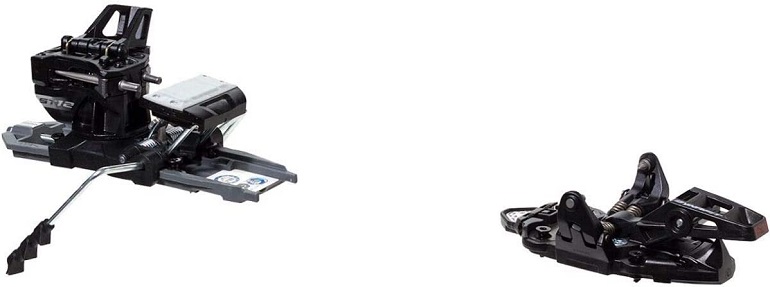
Dynafit ST Rotation 12
- Material: Aluminum
- Sport Type: Skiing
Lightest Bindings
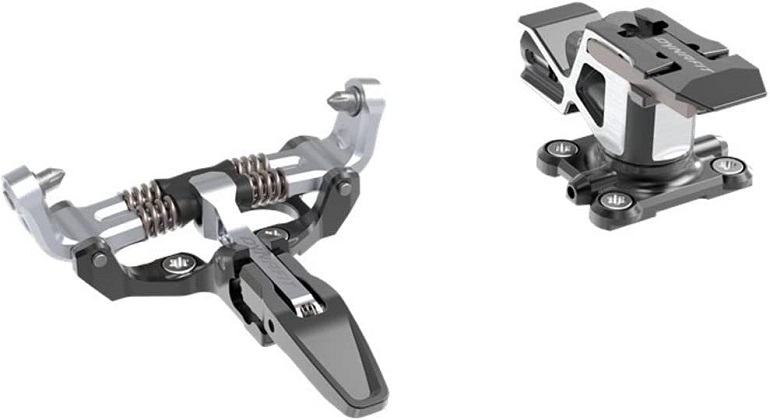
Dynafit Superlite 150
- Material: Aluminum, Plastic
- Sport Type: Skiing
Best Alpine Binding
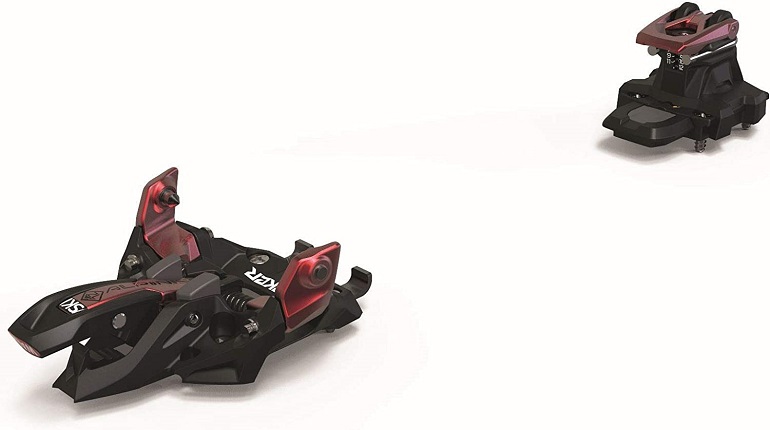
Marker Alpinist 12
- Material: forged aluminium, carbon
- Sport Type: Skiing
Best Shock Absorption
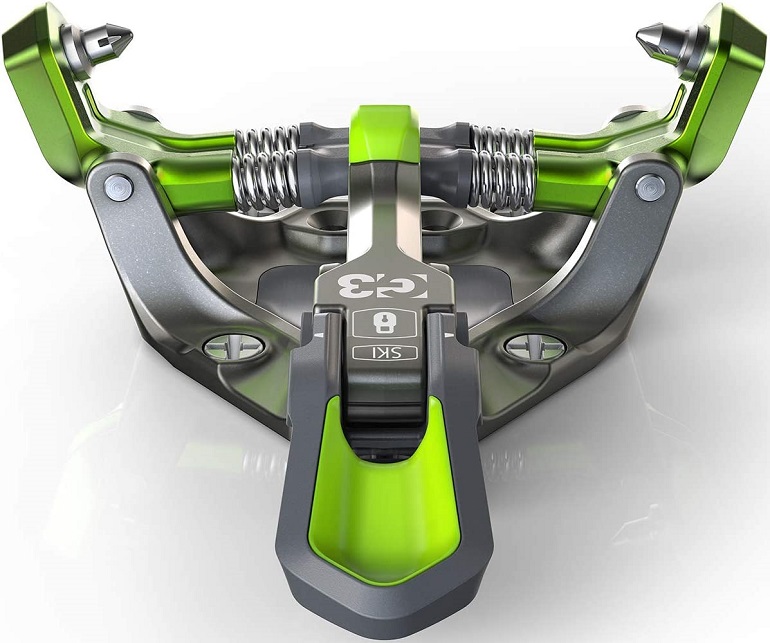
G3 Zed 12
- Material: Hot forged aluminum
- Sport Type: Skiing
Best Skier Assistance

Atomic Backland Tour
- Material: Aluminum
- Sport Type: Skiing
Best For Performance
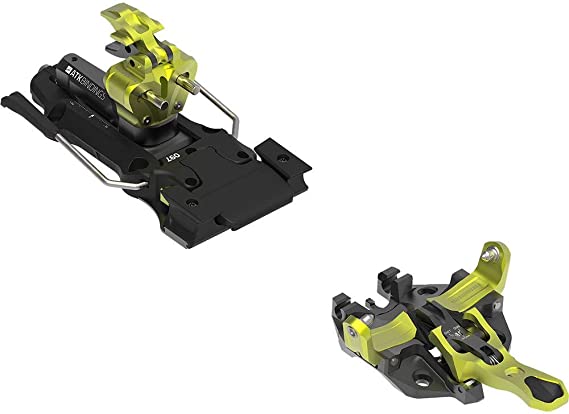
ATK Freeraider 14 Freeride
- Material: Alu Alloys, Stainless Steel
- Sport Type: Skiing
Best Of The Rest
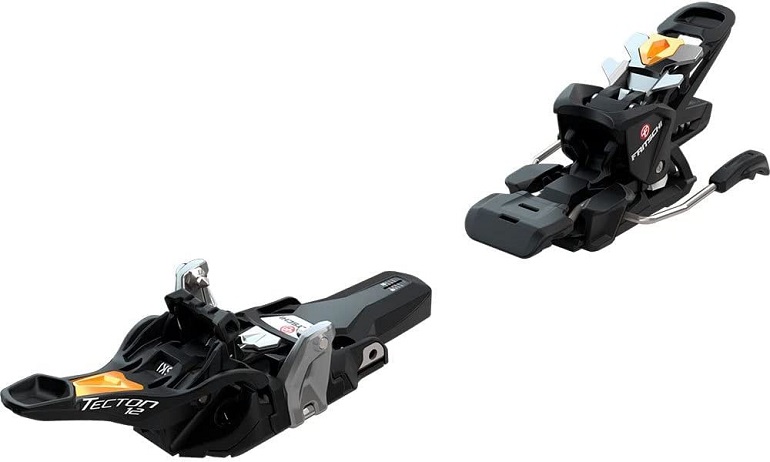
Fritschi Tecton 13
- Material: Steel, aluminum, plastic
- Sport Type: Skiing
8 Best Backcountry Ski Bindings
1. Fritschi Xenic 10
I’ll be honest with you. I don’t know exactly how to pronounce the name of our number one pick, but I do know that they are the best alpine binding currently available.
With a lightweight design that won’t interfere with your skiing and the wide nose and rear pieces for easy clipping, I’d say that the Xenic 10 focused on the bare essentials and nailed them perfectly.
Base Essentials
I’ve gone over the lightweight construction of the Xenic 10s. There aren’t many lighter bindings out there. The wider-than-usual front and heel units were also mentioned, so what else is there to go over?

For starters, the release rating range of the Xenic is between four and ten. This is within the optimal range that most backcountry tourers would appreciate and use.
Done going downhill, and now you have to make the almighty trek back up? Simply turn the heel half-ways and walk mode will be engaged. No need to secure this into place because it’s automatically taken care of once you take the first step.
The Xenic 10 is filled with similar features and enhancements. It’s the binding for the ski mountaineer that wants both form and function.
Features
- Boot Compatibility: Boots with tech fittings only
- Warranty: Two years
- Ability Level: Advanced to Expert
- Material: Great lightweight materials
- Sole Length Adjustment: 10 millimeters
Pros
- DIN release ratings of 4 to 10.
- Agile design that suits any kind of backcountry skiing.
- Easy to step into and out of thanks to the wide design of the front and heel units.
Cons
- Unfortunately, these bindings do not come with brakes.

Fritschi Xenic 10
The price of “Fritschi Xenic 10” varies, so check the latest price at
2. Dynafit ST Rotation 12
Build quality matters on any kind of gear or tech that you purchase. Touring bindings aren’t as delicate as they seem, but you’ll still want to pick out the best touring bindings possible nonetheless.
This is where the Rotation 12s come into play. A great pair of touring bindings that didn’t skimp out on build quality.
Built to last and perform
There are two key materials that make the Dynafit ST Rotation 12 who they are. The first is forged aluminum. This material has all of the benefits that regular aluminum has but with added bonuses. Greater strength, enhanced flexibility, and a solid weight-to-strength ratio.
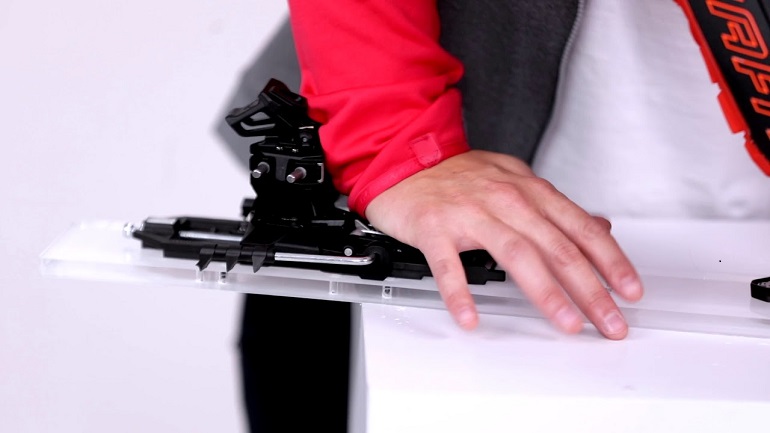
The bottom line is that anything made out of forged aluminum will last longer than a regular aluminum build but still end up weighing less. It’s also corrosion-resistant, yet another thing that you won’t have to worry about.
The other material making up the Dynafit ST Rotation 12s is Cromoly. I hadn’t ever heard of Cromoly before (sounds like a pastry), but some research on the material quickly enlightened me. It’s lighter than regular steel but more flexible than aluminum.
With a frame of this caliber, it’s no wonder that the performance of these bindings was so slick and responsive. At least in my experience. The best-built touring bindings by far.
Features
- Boot Compatibility: Tech boots only
- Warranty: Two years
- Ability Level: Advanced to Expert
- Material: Forged aluminum and Cromoly
- Sole Length Adjustment: 22.5 millimeters
Pros
- Massive adjustable length of twenty-two point five millimeters.
- Adjustable release range of between five and 12.
- Lock style prevents the heel from suddenly rotating into ski mode.
Cons
- Unfortunately, these bindings require ski boots with toe and heel tech fittings.

Dynafit ST Rotation 12
The price of “Dynafit ST Rotation 12” varies, so check the latest price at
3. Dynafit Superlite 150
When reading about touring bindings, frame bindings, or any other kind of binding, you’ll realize that the topic of weight comes around often. The reason for this constant barrage of scales is due to how much the weight of your gear affects your performance.
Well, not just your performance but also your entire ski touring experience.
Weight Matters
Let’s break this topic down into two scenarios. First, your actual skiing performance. A lighter skier that attempts a turn on heavy bindings won’t be able to flex the entire ski, as well as a heavier skier.

Not being able to flex your skis as needed affects the quality and speed of your turns. Having an alpine touring binding that is made out of aluminum 7075, like the Dynafit Superlite 150s, makes it much easier for skiers of all sizes to efficiently control their skis.
The second scenario is one in which you step away from downhill mode and attempt a little uphill ski mountaineering. Wouldn’t it be far easier to climb a hill with bindings that weigh a low amount?
Other features to take into account are the completely fixed front piece for efficient power transfer and the available attachments for crampons. For flawless skiing, you need also to be aware of the right way to mount bindings on a snowboard.
Features
- Boot Compatibility: Tech only
- Warranty: Two years
- Ability Level: Advanced to Expert
- Material: Aluminum 7075 and high-tech synthetic materials
- Sole Length Adjustment: Not available
Pros
- The heel piece has a heel riser for steep tracks.
- The front piece has an adjustable release.
- Optimal bindings for power transfer.
Cons
- The attachments for the ski brakes and adjustment plate are sold separately.

Dynafit Superlite 150
The price of “Dynafit Superlite 150” varies, so check the latest price at
4. Marker Alpinist 12
For these bindings, all one needs to do to understand what they are all about is read the name. The Alpinist 12 has three different heel riser heights that you can switch between for uphill supremacy no matter what terrain you are scaling.
To further aid you in your uphill crusade are reinforced toe components with enhanced power transfer. I challenge you to find a better pair of alpine touring bindings.
More than downhill bindings
The Marker Alpinist has toe components that have been reinforced with carbon. Carbon brings with it many benefits. Namely, high strength and stability.
Your toes are the directors of your entire body. Meld the two together, and you’ve got a match made in heaven.

As your skis flex, the connection between your bindings and them deepens. This is thanks to the length compensation of the Marker alpinist, which has them move the heel back up to 4 millimeters as required.
Take into account the visual step-in aid that makes getting into these bindings a cinch, and you haven’t much to complain about. Everything here was optimized to improve your entire experience.
Not just your turning or power transfer but also your uphill battles and ski flexing. A fantastic pair of alpine touring bindings.
Features
- Boot Compatibility: Tech boots only
- Warranty: Three years
- Ability Level: Advanced to Expert
- Material: Carbon and Fiber reinforced Polyamide
- Sole Length Adjustment: 15 millimeters
Pros
- The neutral walking mode has two climbing aids with a fast shift mode.
- When the ski is flexed, the active length compensation allows the heel to move back up to 4mm.
- Anti-ice pads in the toe base prevent critical areas from icing over.
Cons
- Definitely not for intermediate skiers and under.

Marker Alpinist 12
The price of “Marker Alpinist 12” varies, so check the latest price at
5. G3 Zed 12
Shock absorption is a topic that we haven’t touched on much in this post, but it is still as important as ever. While we may have momentarily forgotten just how vital shock absorption can be, the G3 Zed 12s did not.
In fact, shock absorption is the best quality of these bindings.
Tank the hits not your performance
Before I get into the nitty-gritty of the Zed 12s, I’d like to pay special mention to the simple boot stop that each binding has. This boot stop is there to guide you in the process of stepping in.
It’s a small feature but one that quickly and efficiently takes care of a persistent problem. I am sure that most skiers will agree with this. Now let’s move to the one issue that I have with the Zeds.
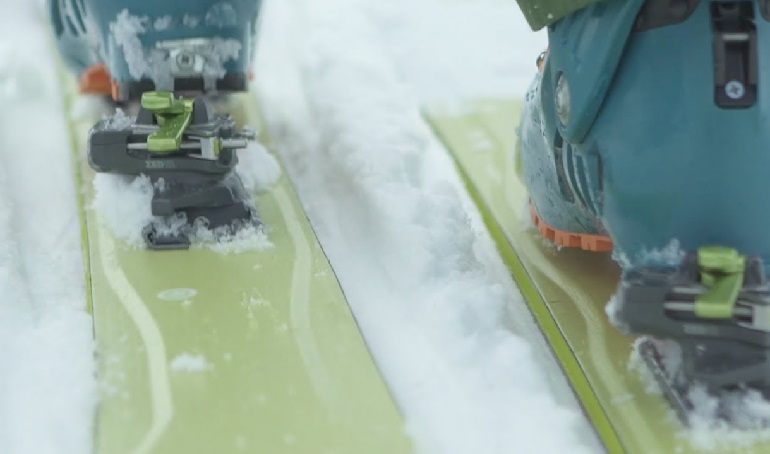
While you can add on a brake, you’ll have to purchase it separately. It’s easy to install but you’ll have to shell out a few extra bucks for it. Not optimal, but still possible. With this disclaimer out of the way, I can begin to explain why the shock absorption is so good.
The heels of the Zed 12 bindings are spring-loaded with a pressure range of 10 millimeters. The toe jaw design of each binding absorbs fifty percent more energy than competing bindings. And finally, anti-snow packing toe and brake designs stop the frost from hindering your performance.
What an all-star list of features.
Features
- Boot Compatibility: Tech only
- Warranty: One year
- Ability Level: Advanced to Expert
- Material: Not available
- Sole Length Adjustment: 30 millimeters
Pros
- Has heels with 10 millimeters of spring-loaded pressure.
- Toe has a snow-clearing channel that allows you to clear snow with your pole tip.
- Step-in guidance is provided thanks to boot stop.
Cons
- Only one year of warranty.
6. Atomic Backland Tour
Skier assistance isn’t only about heel risers that let you scale mountains with ease. Nor does it only refer to a step-in guide for those of us that can’t get it right the first time, myself included.
Skier assistance is an ethos, one that the Backland Tour embodies wholeheartedly.
The Perfect Support
While the Backland Tour does have heel risers and a step-in guide, it offers a whole lot more. For starters, let’s consider the range at which you can adjust your ski binding sole length. Fifty millimeters, that’s enough to safely fit with any number of boot sizes.
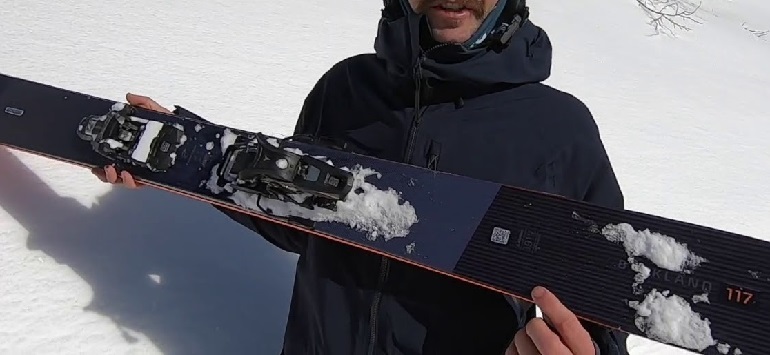
So accommodating your boot size is a cinch as is scaling deep terrain but is there more? Of course! The Backland Tours also have a wider mounting pattern that is designed to improve your performance.
This wider mounting pattern improves ski retention and power transfer. The perfect makings for an overall more responsive and higher-quality ride. Even the materials used to make the Backland Tours are skier friendly.
With a majority aluminum build, you get lightweight bindings that won’t shut down in colder temperatures. Everything about these bindings was optimized to assist the skier.
Features
- Boot Compatibility: Tech only
- Warranty: Two years
- Ability Level: Advanced to Expert
- Material: Aluminum
- Sole Length Adjustment: 50 millimeter
Pros
- The wider mounting pattern improves retention and power transfer.
- Maximum efficiency on steep terrain thanks to heel risers.
- Fifty millimeters of sole length adjustments possible, accommodating all kinds of boot sizes.
Cons
- Few sizing options to choose from.

Atomic Backland Tour
The price of “Atomic Backland Tour ” varies, so check the latest price at
7. ATK Freeraider 14 Freeride
Better performance is something that we are all after. Constant progression makes us feel alive, and since the Freeraider 14s are built for performance, then it is safe to say that they are the perfect bindings to make you feel alive.
Think about it, what could be more exhilarating than sending wave after wave of fresh pow into the air?
The rainmaker
The Freeraiders are made up of a few key tenets that maximize their performance efficiency. I’d say that the heel piece is the perfect place to start. The heel piece of the Freeraider 14s Freeride has an elastic sliding system applied to them.
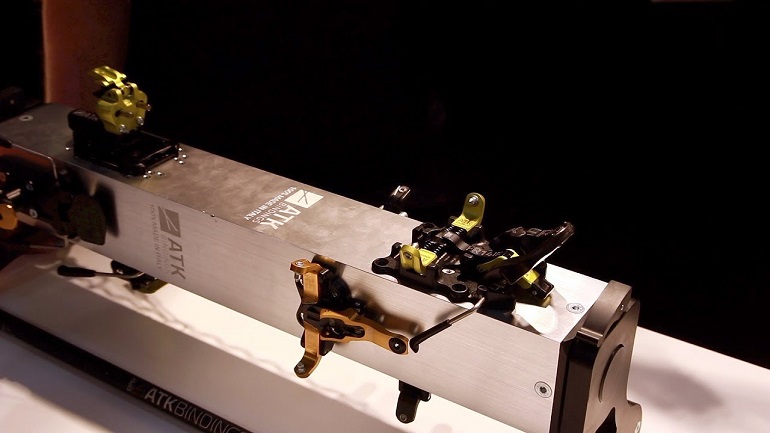
This elastic system reduces the pressure applied to the skis, bindings, and even your boots themselves. It also improves the control that you have over your skis, even when landing big jumps.
The locking hardness of the toe piece can be adjusted to fit your comfort and style. No longer will you have to contend with uncomfortable settings and bindings. After all, you are able to ski your best when you are comfortable.
With a heel piece and toe piece completely focused on giving you more control over your skis and your comfort, it’s no wonder why these bindings are perfect for upping your game.
Features
- Boot Compatibility: Tech boots only
- Warranty: Not available
- Ability Level: Advanced to Expert
- Material: Hardness Variator
- Sole Length Adjustment: 25-millimeter adjustment
Pros
- An elastic sliding system is applied to the heel system.
- The heel release system has both lateral and vertical release capabilities.
- You are able to change the locking hardness of the toe piece.
Cons
- No warranty is available, but fortunately, the Freeraiders have a high-durability build.

ATK Freeraider 14 Freeride
The price of “ATK Freeraider 14 Freeride” varies, so check the latest price at
8. Fritschi Tecton 13
It’s the return of the oddly named bindings. What better way to end our list than in the same way that we started it? The Tecton 13 doesn’t just have the same brand as our best overall pick. They are also worthy rivals when it comes to performance and build quality.
Tectonic destruction
Tecton wanted to set itself apart from the other Fritschi offering on our list. It did so by having micro-adjustable width wings on the toe piece, allowing you to accommodate tech inserts for a better and more secure fit.
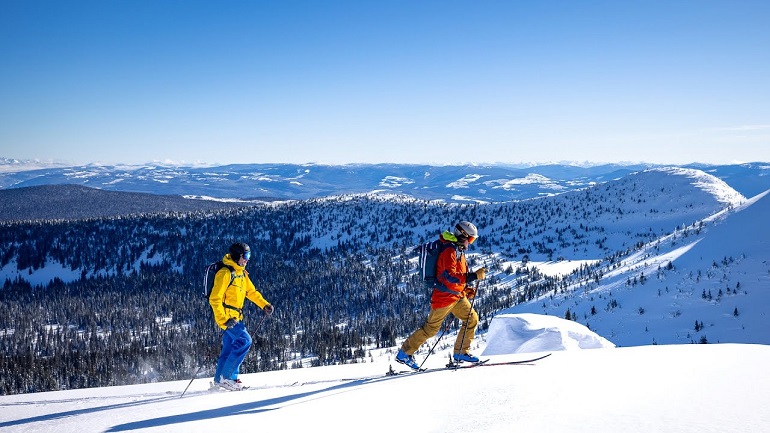
Following closely behind this feature is an improved alpine heel design. What’s so improved about it you ask? The power transmission. Power transmission is a factor that affects several other areas.
With better power transmission, you get more responsive bindings, the ability to ski harder and faster, as well as harder turning power. With this in mind, the Tecton 13 makes all of the aforementioned possible.
It’s no wonder why I consider this binding a true one-quiver solution to all your skiing needs.
Features
- Boot Compatibility: Tech only
- Warranty: Two years
- Ability Level: Advanced to Expert
- Additional Features: Easy Step-in
- Heel Elasticity: 9-millimeter vertical elasticity
Pros
- Has micro-adjustable width wings on the toe piece.
- Improved power transmission thanks to its alpine heel design.
- Great one-quiver bindings for all your skiing needs.
Cons
- A bit pricey, but this is due to their quality.

Fritschi Tecton 13
The price of “Fritschi Tecton 13” varies, so check the latest price at
How to Choose the Best Backcountry Ski Bindings
It’s not a question you think you should ask, but it is important. Yes, all of the backcountry ski bindings listed above are quality, but some may suit you and your skiing style better than others.
A backcountry binding is complex. To get the right ski bindings for you, you’ll have to consider the following four categories and how they affect your skiing style.
The Downhill Performance Of Backcountry Bindings
How’s that old real estate saying go? “It’s all about location, location, location”. It’s true, and when searching for that perfect pair of backcountry ski bindings, you’ll have to ask yourself what kind of terrain or conditions you want your ski bindings to perform best.
When it comes to backcountry skiing, you’ve got two choices. Ski touring bindings that have great downhill performance or a touring binding that has great uphill performance. There aren’t many options (if any at all) that can give you the same uphill and downhill performance.
Uphill Performance Recommendation
With this in mind, those that want great uphill performance should seek out a tech binding that is lightweight and has a responsive pivot point. The Dynafit Superlite 150 fits this description perfectly.
Downhill Performance Recommendation
A downhill performance-based tech binding should have alpine heel risers and plenty of safety-focused features. My pick of the bunch would be the Marker Alpinist 12.
Your Ski Bindings and their Price Point
Any way you slice it, your wallet is going to feel a crunch. That is if you want a high-quality pair of tech bindings. And you are going to want tech bindings.
Of the various different kinds of backcountry bindings, tech bindings have the best performance for both uphill and downhill skiing. They are the most comfortable to ski in and the first choice for most backcountry skiers.
Quality bindings also have great user-friendly features, such as adjustable heel risers, a lateral release, and more. Just make sure that you have the most comfortable ski boots that are compatible with your bindings.
Tech bindings are only compatible with tech boots.
Backcountry Ski Binding Weight
The weight of your ski bindings is obviously going to affect your performance and overall skiing experience. Ski mountaineering is a rough activity to engage in, rough but rewarding if you have the right bindings.
This is another area in which tech bindings shine. These bindings tend to have a simpler design to them, and as a result, they weigh a lot less than bindings that resort skiers may be used to.
The Dynafit Superlite 150 bindings would be a great lightweight option to have in your ski gear closet. Remember, when backcountry touring, you’ll be trekking uphill before you can enjoy the downhill ride.
Lightweight bindings take this trekking chore and turn it into a more manageable experience.
Backcountry Ski Binding Durability
The build quality of your bindings will directly affect how long they last. Bindings like the Dynafit ST Rotation 12 have got an impressive aluminum construction that won’t buckle in cold weather or when used by aggressive skiers.
These bindings also have a bayonet lock that ensures skier security throughout your backcountry tours. Features like the ones I just listed are a staple of the best touring bindings.
If you want durability (you should), then you should find what you are looking for listed above. A rule of thumb is the more metal parts a backcountry ski binding has, the more durable it’ll be.
My Final Thoughts
There is a lot to a backcountry ski binding. Even expert snowboarders will have a difficult time understanding everything there is to them. A few key details to remember:
- Metal parts such as carbon, aluminum, and the like are great for binding durability but can result in a heavier pair of bindings.
- The best ski bindings usually only excel at either uphill or downhill performance. But there are tech bindings that are capable of having some parity between the two types of activities.
- Great bindings come at an equally great price.
Backcountry skiing is an exhilarating way to pass the time, but you’ll have to head into it with the right gear. Otherwise, you could sour your experience before you have even begun.
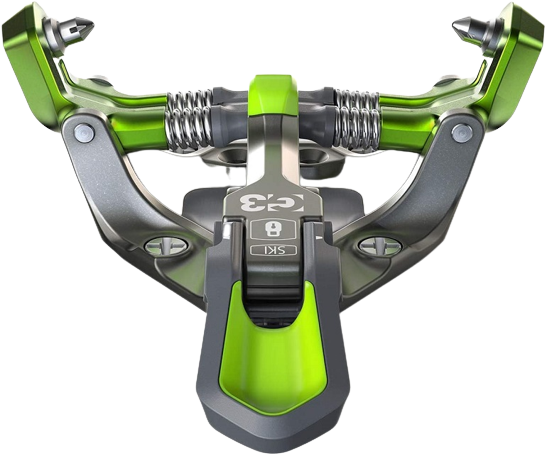
0 Comments